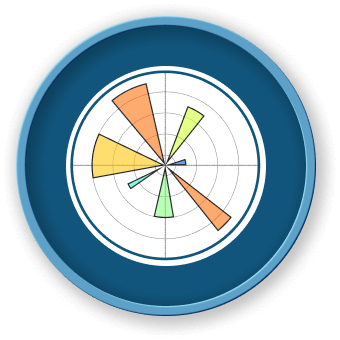Learn Matplotlib, a comprehensive Python library for creating static, animated, and interactive visualizations. This structured learning path offers a series of Matplotlib courses designed for data science beginners. The roadmap covers fundamental plot types, advanced customization, and integration into data analysis workflows. Gain practical experience by completing hands-on, non-video exercises in an interactive plotting playground to master real-world data visualization.
TABLE OF CONTENTS
BASIC CONCEPTS
Fundamental concepts of Matplotlib, including importing Matplotlib, understanding figures and axes, setting figure size and DPI, and saving figures to files.
Importing Matplotlib is the first step in using the library for data visualization in Python. It allows you to access Matplotlib's functionality.
Figures and axes are fundamental components of Matplotlib. Figures represent the entire window or page, while axes are the individual plotting areas within a figure.
Matplotlib allows you to save your plots as image files, such as PNG or JPEG, to share or use in reports.
PLOTTING DATA
Skills related to creating various types of plots and visualizations in Matplotlib.
Line plots are used to visualize data points connected by straight lines, commonly used for time series data.
Scatter plots display individual data points as markers on a graph, often used to show relationships between two variables.
Bar charts represent data using rectangular bars, suitable for displaying categorical data and comparisons between categories.
Histograms are used to visualize the distribution of numerical data, showing the frequency of data points in different bins.
ADVANCED PLOTTING
Advanced techniques and features for creating complex visualizations in Matplotlib.
Subplots allow you to create multiple plots within a single figure, facilitating side-by-side visual comparisons.
PLOT CUSTOMIZATION
Techniques for customizing the appearance of Matplotlib plots.
You can customize the appearance of lines in plots by changing their styles and colors to make your visualizations more distinctive.
Titles and labels can be added to plots to provide context and make your visualizations more informative.
Legends help identify different elements in a plot; you can configure their position and appearance for clarity.
Customize axis ticks to control their appearance and labeling for improved readability.
Grid lines can be added to plots to aid in data interpretation; their style and visibility can be customized.
SPECIALIZED PLOTS
Advanced types of plots for specific data visualization needs.
Pie charts represent data as sectors of a circle, showing the relative proportions of different categories.
